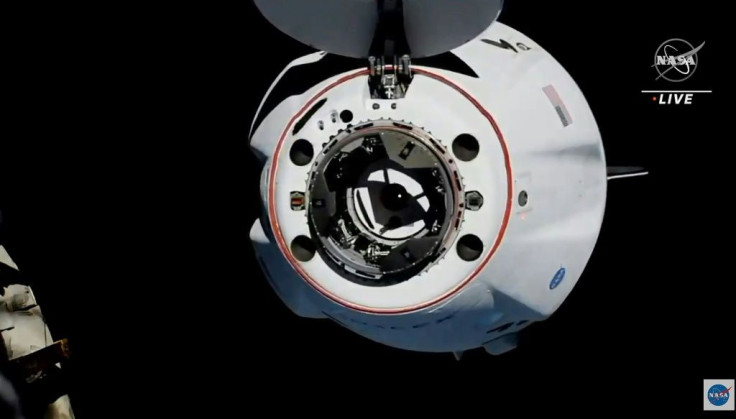'There Was No Object': SpaceX Crew-2 Near-Miss With Space Junk A 'False Alarm'
KEY POINTS
- Astronauts were warned of a potential collision with space junk
- A U.S. Space Command spokesperson confirmed that it had been a "false alarm"
- It showed astronauts' preparedness for such events amid the space junk problem
Astronauts aboard the SpaceX CrewDragon were asked to prepare for a possible collision with space debris last week. But the threat turned out to be a false alarm.
Just hours after the CrewDragon launched from Kennedy Space Center on April 23, Crew-2 mission astronauts aboard the spacecraft were notified about a possible collision with space junk. The astronauts were already preparing for bed at the time, Gizmodo reported, but they were instructed to wear their spacesuits again and lower their visors "out of an overabundance of caution."
"For awareness, we have identified a late-breaking possible conjunction with a fairly close miss distance to Dragon, as such we do need you to immediately proceed with suit donning and securing yourselves in seats," lead space operations engineer at SpaceX, Sarah Gilles, said, as one can hear in the footage of the nerve-wracking moment.
This is something that the NASA, Japan Aerospace Exploration Agency (JAXA) and European Space Agency (ESA) astronauts had already practiced many times, the Associated Press (AP) News said. Eventually, mission control gave the all-clear, noting that the object was "farther away than anticipated," and the astronauts safely arrived at the International Space Station (ISS) on Saturday.
'False Alarm'
In an email obtained by the AP News on Monday, U.S. Space Command noted that there had actually been an error and the supposed threat had just been a false alarm. Although the U.S. Space Command thought at the time that the threat was real, it became clear that it was not.
"However, we quickly realized this was a reporting error and that there was never a collision threat because there was no object at risk of colliding with the capsule," a spokesperson for the U.S. Space Command, Lt. Col. Erin Dick, said in an email as per the AP News.
She gave no further details on what had taken place but added that more information may be available later in the week. The error is now "under review."
NASA spokesperson Kelly Humphries also spoke out about the false alarm, commending the crew's preparedness for such an event even if the threat had turned out to be unreal.
Space Junk Problem
Although the potential threat was a false alarm, it shows the extent of the space junk problem in Earth's orbit. Data from the ESA's Space Debris Office shows that since the space age began in 1957, there have been over 6,000 rocket launches, excluding the ones that failed. Of the 11,370 rockets that were launched, about 6,900 are still in space even if just 4,000 are still functioning.
As of April 15 this year, the agency has logged a total of over 9,300 tons of space objects in Earth's orbit. Of the debris, 128 million are 1 millimeter to 1 centimeter in size, 900,000 are 1 centimeter to 10 centimeters, and 34,000 are over 10 centimeters.
According to NASA, such space debris can travel fast enough that even small pieces such as flecks of paint can inflict damage on a spacecraft or satellite. In 1996, for instance, a French satellite incurred damage because of debris from a rocket that had exploded years before. And in 2009, a working U.S. Iridium commercial satellite was destroyed after colliding with a defunct Russian satellite. It even added more debris to the already growing body of space junk.
"The rising population of space debris increases the potential danger to all space vehicles, but especially to the International Space Station, space shuttles and other spacecraft with humans aboard," NASA said.

© Copyright IBTimes 2024. All rights reserved.






















